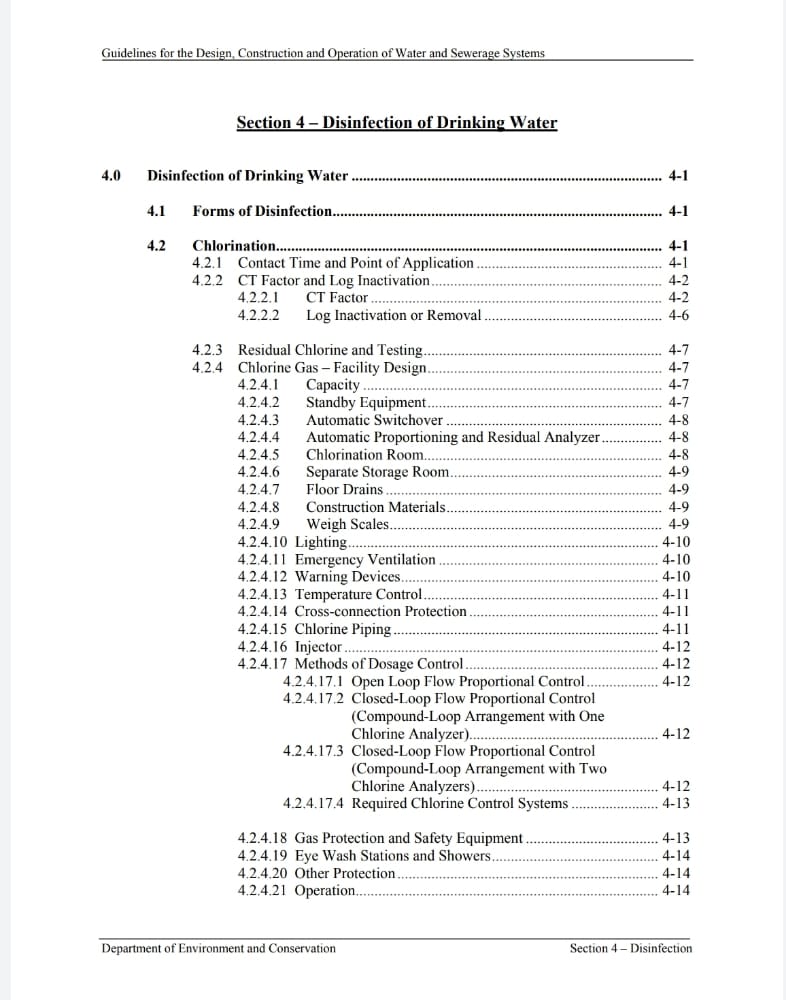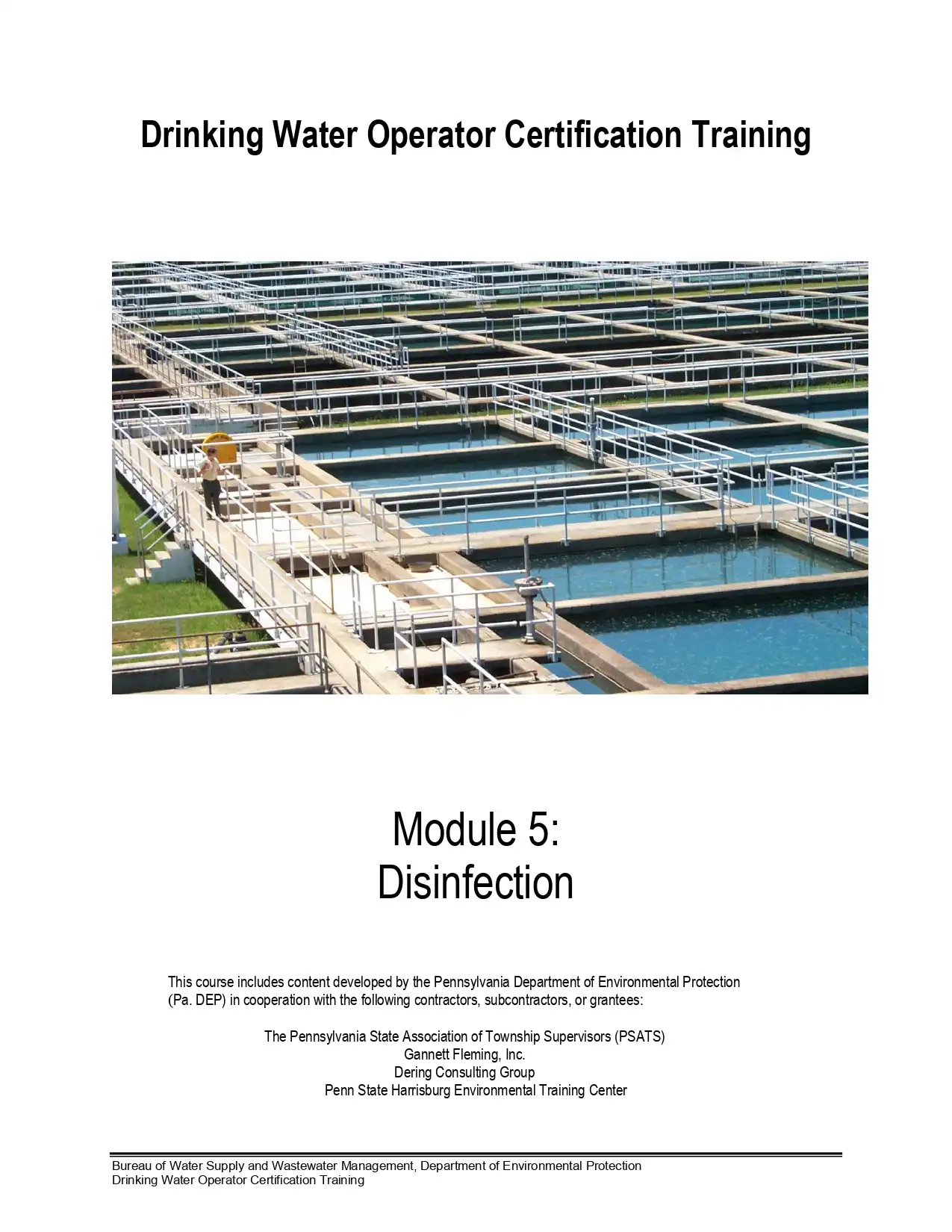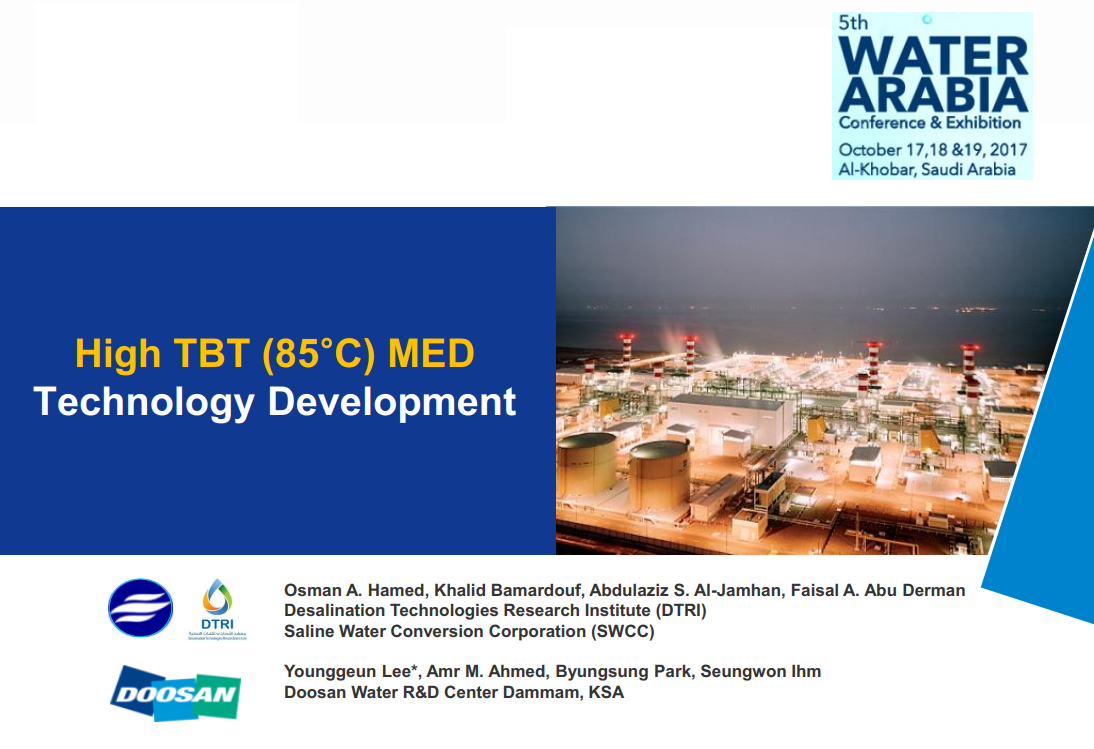Disinfection and Chlorination
Disinfection is the process designed to kill or inactivate most microorganisms in wastewater, including essentially all pathogenic organisms. Contrast this to sterilization, which is the removal and destruction of all living microorganisms, including pathogenic and saprophytic bacteria, vegetative forms and spores.
Disinfection and Chlorination
Disinfection is the process designed to kill or inactivate most microorganisms in wastewater, including essentially all pathogenic organisms. Contrast this to sterilization, which is the removal and destruction of all living microorganisms, including pathogenic and saprophytic bacteria, vegetative forms and spores.
Disinfection and Oxidation
Disinfection:
is killing or inactivate of pathogenic organisms. It is necessary if the water to be used for drinking water is not hygienically reliable. In water treatment, aimed at the production of drinking water, disinfection is the most important treatment step. Purpose of disinfection: To make Drinking water free of any disease causing bacteria and microbes.
Disinfection and Oxidation
Disinfection:
is killing or inactivate of pathogenic organisms. It is necessary if the water to be used for drinking water is not hygienically reliable. In water treatment, aimed at the production of drinking water, disinfection is the most important treatment step. Purpose of disinfection: To make Drinking water free of any disease causing bacteria and microbes.
Disinfection of Drinking Water
The goal of water disinfection is the inactivation of microorganisms, such as viruses, bacteria and protozoa, which can cause serious illnesses and death. Although disinfection can be accomplished to a significant extent by a number of physiochemical water treatment processes, such as coagulation, sedimentation, filtration, lime-soda softening and adsorption, a specific chemical disinfection step is usually incorporated into surface water treatment process trains to prevent the transmission of waterborne diseases.
Disinfection of Drinking Water
The goal of water disinfection is the inactivation of microorganisms, such as viruses, bacteria and protozoa, which can cause serious illnesses and death. Although disinfection can be accomplished to a significant extent by a number of physiochemical water treatment processes, such as coagulation, sedimentation, filtration, lime-soda softening and adsorption, a specific chemical disinfection step is usually incorporated into surface water treatment process trains to prevent the transmission of waterborne diseases.
Disinfection of Water
This course includes content developed by the Pennsylvania Department of Environmental Protection
(Pa. DEP) in cooperation with the following contractors, subcontractors, or grantees:
The Pennsylvania State Association of Township Supervisors (PSATS)
Gannett Fleming, Inc.
Dering Consulting Group
Penn State Harrisburg Environmental Training Center
Disinfection of Water
This course includes content developed by the Pennsylvania Department of Environmental Protection
(Pa. DEP) in cooperation with the following contractors, subcontractors, or grantees:
The Pennsylvania State Association of Township Supervisors (PSATS)
Gannett Fleming, Inc.
Dering Consulting Group
Penn State Harrisburg Environmental Training Center
Biocides for Disinfection and Storage of Hydranautics Membrane Elements
This bulletin provides general information about biocides that may be used with Hydranautics membrane elements for disinfection and/or storage. Before storage or disinfection of Hydranautics elements, one should become familiar with Technical Service Bulletins 108 and 118 which describe the general storage and flushing procedures for all Composite Polyamide, and PVD membrane elements. Also, one should confirm which type of membrane elements are actually in the system. Since elements may be composed of either composite polyamide membrane or polyvinyl derivative, it is imperative to be certain of the type to be disinfected.
Biocides for Disinfection and Storage of Hydranautics Membrane Elements
This bulletin provides general information about biocides that may be used with Hydranautics membrane elements for disinfection and/or storage. Before storage or disinfection of Hydranautics elements, one should become familiar with Technical Service Bulletins 108 and 118 which describe the general storage and flushing procedures for all Composite Polyamide, and PVD membrane elements. Also, one should confirm which type of membrane elements are actually in the system. Since elements may be composed of either composite polyamide membrane or polyvinyl derivative, it is imperative to be certain of the type to be disinfected.
Tailoring Advanced Desalination Technologies for 21st Century Agriculture
Abstract: Substantial parts of the U.S., particularly drier landlocked regions, are facing acute water shortages and water quality issues that decrease agricultural productivity. Reduced crop yields cause billions of dollars in losses annually, affecting the livelihoods of thousands. A combination of population growth, inefficient agricultural practices, and resource demanding consumption trends is only expected to increase pressure on our water supplies. This research proposal seeks to address water and food security issues by cost-effectively and energy-efficiently enhancing water quality and water supply in greenhouses; a $22.93 billion dollar industry in 2017 that is rapidly growing at an annual rate of 8.92%. Greenhouses widely practice desalination of salty irrigation water to improve their operations. However, currently used desalination methods do not tailor greenhouse waters based on crop requirements. This work investigates a fully integrated desalination solution that treats and tailors brackish source waters ingreenhouses to save fertilizer and water. Specifically, this project experimentally studies multi-ion transport in and assesses the economic viable of monovalent selective electrodialysis (MSED). MSED allows for the selective removal of monovalent ions damaging to crops and the retention of divalent ions beneficial for crops, unlike the widely used reverse osmosis (RO), which removes all ions from greenhouse source water. First, we evaluate the techno-economic feasibility of MSED compared to other brackish desalination technologies for agricultural applications, based on primary market research we conduct with over 70 greenhouses.
These include conventional technologies, such as reverse osmosis (RO) and electrodialysis (ED), and advanced technologies, such as closed circuit reverse osmosis (CCRO). The analysis determines the levelized costs of water, the capital costs and energy requirements of these technologies, and how these vary with feed salinity, system capacity and recovery ratio. Then, we build a bench-scale setup to experientially characterize MSED membrane properties, including monovalent selectivity, ion transport, limiting current and resistance, for multiple brackish feedwaters and for two sets of MSED membranes: the widely used Neosepta ACS/CMS membranes and the new Fujifilm Type 16 membranes. Both MSED membranes show notable monovalent selectivity for all tested compositions, reflecting the potential of the technology for selective desalination in greenhouses. The measurements are compared to a model for MSED in multi-ion solutions. The model predicts multi-ion transport for the Neosepta and Fujifilm MSED systems within 6% and 8%, respectively.
Tailoring Advanced Desalination Technologies for 21st Century Agriculture
Abstract: Substantial parts of the U.S., particularly drier landlocked regions, are facing acute water shortages and water quality issues that decrease agricultural productivity. Reduced crop yields cause billions of dollars in losses annually, affecting the livelihoods of thousands. A combination of population growth, inefficient agricultural practices, and resource demanding consumption trends is only expected to increase pressure on our water supplies. This research proposal seeks to address water and food security issues by cost-effectively and energy-efficiently enhancing water quality and water supply in greenhouses; a $22.93 billion dollar industry in 2017 that is rapidly growing at an annual rate of 8.92%. Greenhouses widely practice desalination of salty irrigation water to improve their operations. However, currently used desalination methods do not tailor greenhouse waters based on crop requirements. This work investigates a fully integrated desalination solution that treats and tailors brackish source waters ingreenhouses to save fertilizer and water. Specifically, this project experimentally studies multi-ion transport in and assesses the economic viable of monovalent selective electrodialysis (MSED). MSED allows for the selective removal of monovalent ions damaging to crops and the retention of divalent ions beneficial for crops, unlike the widely used reverse osmosis (RO), which removes all ions from greenhouse source water. First, we evaluate the techno-economic feasibility of MSED compared to other brackish desalination technologies for agricultural applications, based on primary market research we conduct with over 70 greenhouses.
These include conventional technologies, such as reverse osmosis (RO) and electrodialysis (ED), and advanced technologies, such as closed circuit reverse osmosis (CCRO). The analysis determines the levelized costs of water, the capital costs and energy requirements of these technologies, and how these vary with feed salinity, system capacity and recovery ratio. Then, we build a bench-scale setup to experientially characterize MSED membrane properties, including monovalent selectivity, ion transport, limiting current and resistance, for multiple brackish feedwaters and for two sets of MSED membranes: the widely used Neosepta ACS/CMS membranes and the new Fujifilm Type 16 membranes. Both MSED membranes show notable monovalent selectivity for all tested compositions, reflecting the potential of the technology for selective desalination in greenhouses. The measurements are compared to a model for MSED in multi-ion solutions. The model predicts multi-ion transport for the Neosepta and Fujifilm MSED systems within 6% and 8%, respectively.
A Review of the Water Desalination Technologies
Abstract: Desalination is commonly adopted nowadays to overcome the freshwater scarcity in
some areas of the world if brackish water or salt water is available. Different kinds of technologies
have been proposed in the last century. In this paper, the state of the mainstream solutions is
reported, showing the current commercial technologies like reverse osmosis (RO), Multi-Stages Flash
desalination (MSF) and Multi-Effect Distillation (MED), and the new frontiers of the research with
the aim of exploiting renewable sources such as wind, solar and biomass energy. In these cases,
seawater treatment plants are the same as traditional ones, with the only difference being that they
use a renewable energy source. Thus, classifications are firstly introduced, considering the working
principles, the main energy input required for the treatment, and the potential for coupling with
renewable energy sources. Each technology is described in detail, showing how the process works
and reporting some data on the state of development. Finally, a statistical analysis is given concerning
the spread of the various technologies across the world and which of them are most exploited. In this
section, an important energy and exergy analysis is also addressed to quantify energy losses.
A Review of the Water Desalination Technologies
Abstract: Desalination is commonly adopted nowadays to overcome the freshwater scarcity in
some areas of the world if brackish water or salt water is available. Different kinds of technologies
have been proposed in the last century. In this paper, the state of the mainstream solutions is
reported, showing the current commercial technologies like reverse osmosis (RO), Multi-Stages Flash
desalination (MSF) and Multi-Effect Distillation (MED), and the new frontiers of the research with
the aim of exploiting renewable sources such as wind, solar and biomass energy. In these cases,
seawater treatment plants are the same as traditional ones, with the only difference being that they
use a renewable energy source. Thus, classifications are firstly introduced, considering the working
principles, the main energy input required for the treatment, and the potential for coupling with
renewable energy sources. Each technology is described in detail, showing how the process works
and reporting some data on the state of development. Finally, a statistical analysis is given concerning
the spread of the various technologies across the world and which of them are most exploited. In this
section, an important energy and exergy analysis is also addressed to quantify energy losses.










